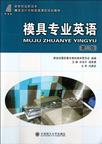(高职高专)模具专业英语
2009-8
大连理工大学出版社
肖伟平,谢英星 主编
145
《模具专业英语》(第二版)是新世纪高职高专教材编审委员会组编的模具设计与制造类课程规划教材之一。 改革开放以来,我国的模具制造行业不断发展壮大,与国外同行之间的业务交往以及大量的模具技术设备的引进也随之增多,模具专业英语的应用越来越广泛。对于模具专业的大中专学生和从事模具设计与制造的工程技术人员来说,熟练掌握模具行业的英语技能是非常必要的。模具技术涉及高分子材料、模具金属材料、模具结构、成型加工设备等诸多领域,模具专业所涉及的科技英语词汇和语句等虽常见于各专业文献中,但难以全面、系统地反映模具材料、设备及工艺的内在联系。 本教材将作者在模具行业的工程实践与其在高职教育领域长期的教学体会相结合,有针对性地选择了塑料模具和冲压模具方面的专业技术文章和相关技术资料进行组织编写,所选文章涵盖了模具材料、注塑机器、模具结构、模具加工设备及加工技术等方面的知识。 本教材共分五个单元,分别叙述了模具材料、注射模具设计、锻压成形及模具设计、模具加工技术、模具报价与结算方面的内容,大部分文章选自相关专业教材或相关专业刊物原文。全书图文并茂,与专业课程联系紧密,每课课文后都附有新单词、词组注释、互动练习等模块。其中互动练习模块的内容是在前一版的基础上新增的,实用性较强,着重训练学生的归纳和总结能力,加强学生对专业知识的理解,方便教师与学生在课堂上的交流互动,同时也可提高学生的学习兴趣。为扩大学生的阅读范围并补充知识量,本教材在每一篇课文后都安排了阅读材料,以供学有余力的学生阅读,也可选择其中部分内容作为课后作业。 本教材可作为高等职业院校、高级技师学院模具设计与制造等相关专业的教材,也可供相关工程技术人员参考使用。
Unit One Mold Materials Lesson 1 Polymers Lesson 2 Mold Materials Lesson 3 Selection of the SteelUnit Two The Injection Mold Design Lesson 4 The Injection Molding and Machine Lesson 5 Three-plate Mold Lesson 6 Feed System Lesson 7 Mold Cavities and Cores Lesson 8 Ejection System Lesson 9 Splits Lesson 10 Mold Cooling Lesson 11 Runnerless Molds Nozzle TypeUnit Three Press Process and Die Design Lesson 12 Stamping and Punching Dies, Compound Die Design Lesson 13 Extrusion Lesson 14 Forging ProcessesUnit Four Manufacturing Technology of Mold Lesson 15 Numerical Control Lesson 16 Electric Discharge Machining Lesson 17 Wire Electrical Discharge Machining(Wire EDM)Unit Five Quotation and Contract for Mold & Die Lesson 18 Introduction of Quotation for Mold Lesson 19 Mold Making Contract基本词汇表参考文献
An alloy is a partial or complete solid solution of one or more elements in a metallic matrix. Complete solid solution alloys give single solid phase microstructure, while partial solutions give two or more phases that may be homogeneous in distribution depending on thermal (heat treatment) history. Alloys usually have different properties from those of the component elements. Alloying one metal with other metal(s) or non metal(s) often enhances its properties. For instance, steel is stronger than iron, its primary element. The physical properties, such as density, reactivity, Youngs modulus, and electrical and thermal conductivity, of an alloy may not differ greatly from those of its elements, but engineering properties, such as tensile strength and shear strength may be substantially different from those of the constituent materials. This is sometimes due to the sizes of the atoms in the alloy, since larger atoms exert a compressive force on neighboring atoms, and smaller atoms exert a tensile force on their neighbors, helping the alloy resist deformation. Alloys may exhibit marked differences in behavior even when small amounts of one element occur. For example, impurities in semi-conducting ferromagnetie alloys lead to different properties, as first predicted by White, Hogan, Suhl, Tian Abrie and Nakamura. Some alloys are made by melting and mixing two or more metals. Brass is an alloy made from copper and zinc. Bronze, used for bearings, statues, ornaments and church bells, is an alloy of copper and tin. Unlike pure metals, most alloys do not have a single melting point. Instead, they have a melting range in which the material is a mixture of solid and liquid phases. The temperature at which melting begins is called :the solidus and the temperature when melting is complete is called the liquidus. However, for most alloys there is a particular proportion of constituents (in rare cases two) which has a single melting point. This is called the alloys eutectic mixture, as shown in Fig. 1-4.

还好吧 能用的到
补充专业词汇很有用,值得购买
这本书对于刚开始接触模具的在校学生还是比较好的,但是不是很适合我。